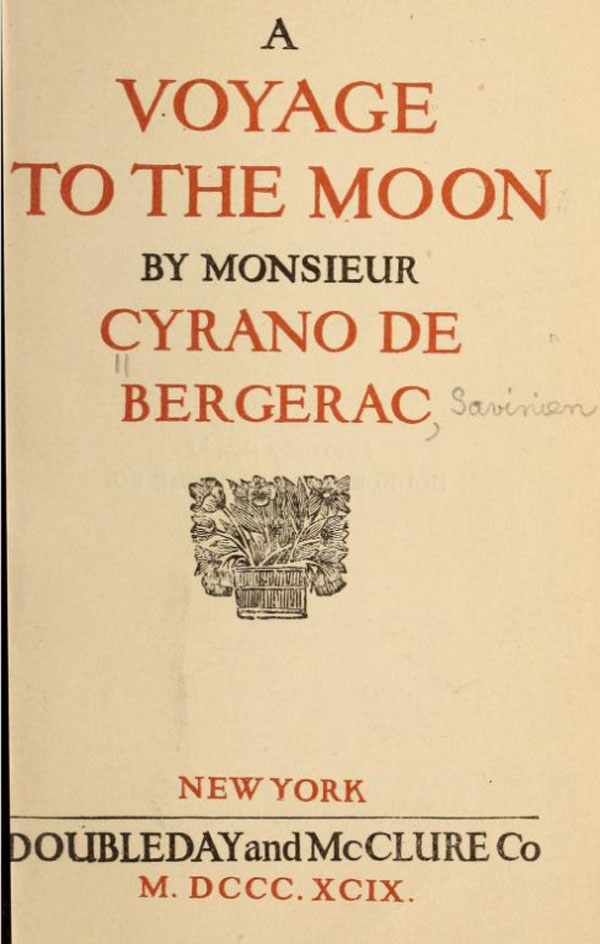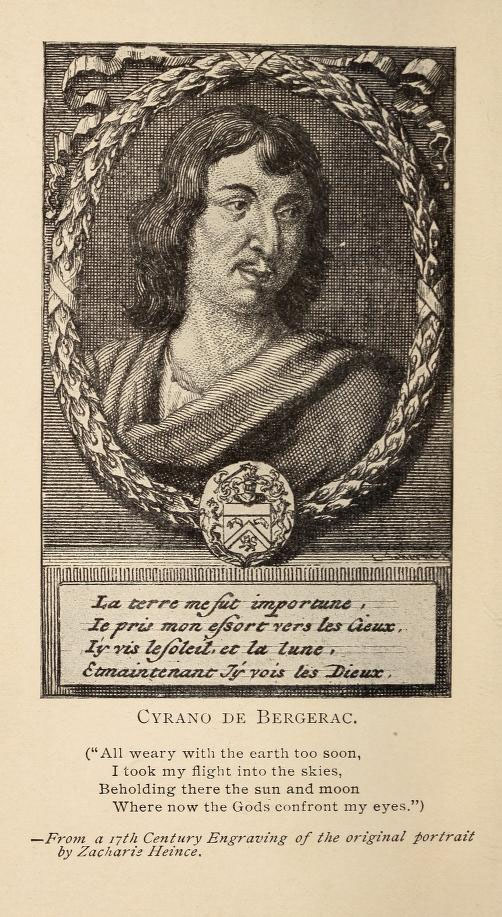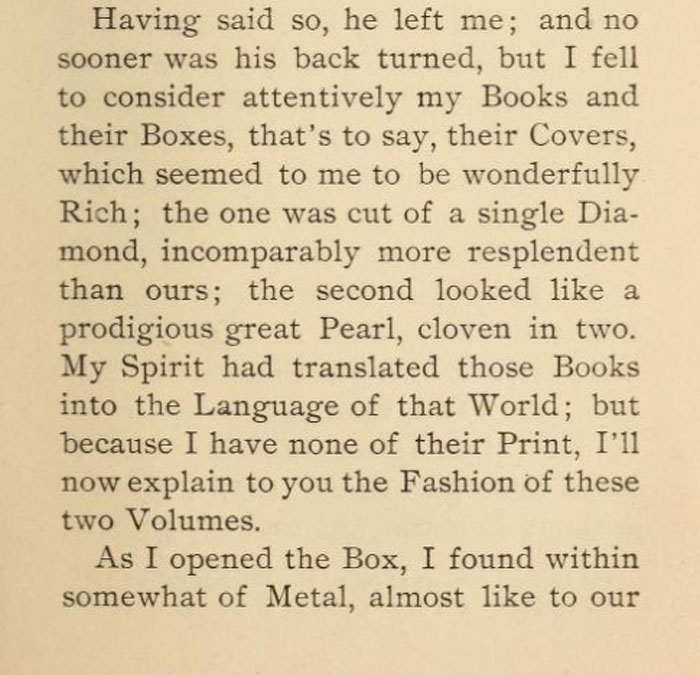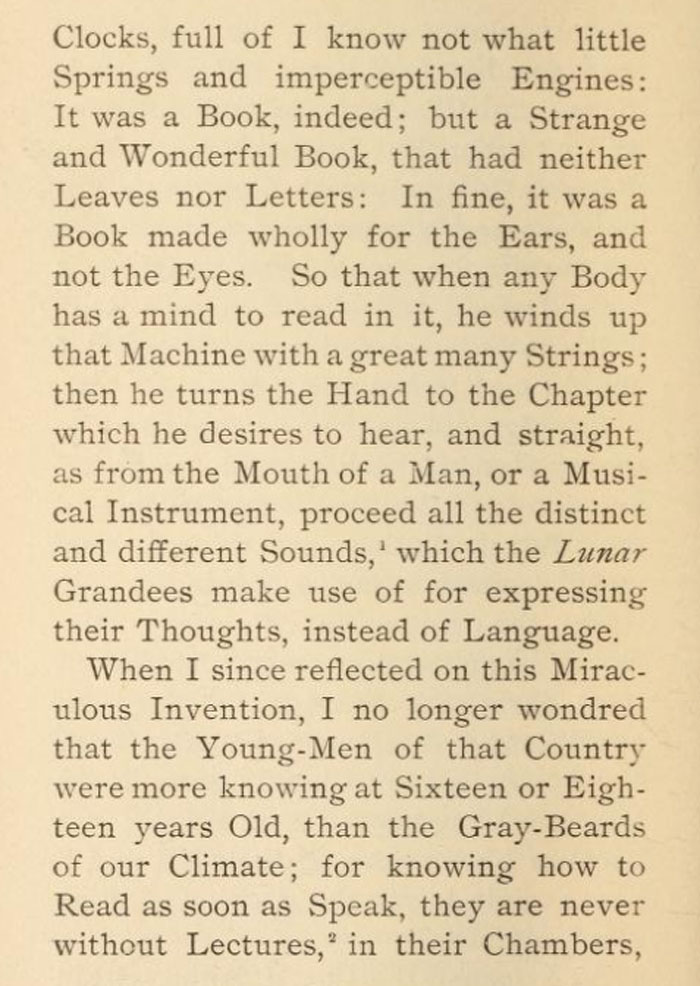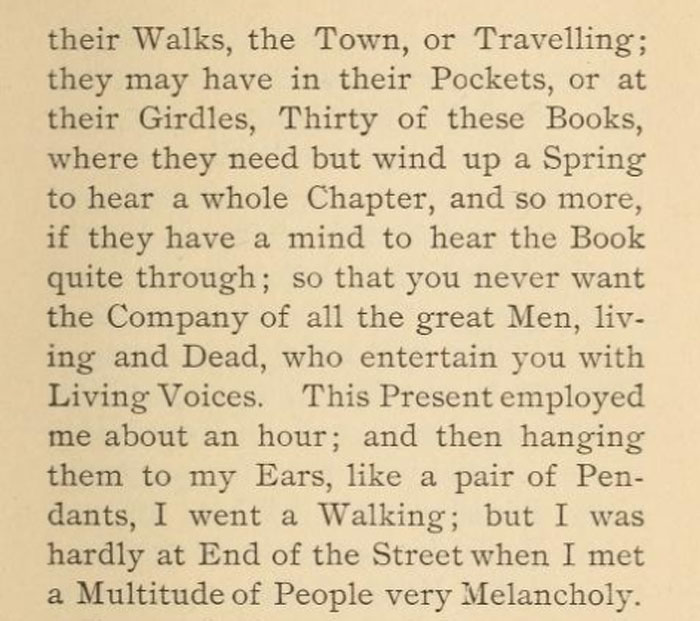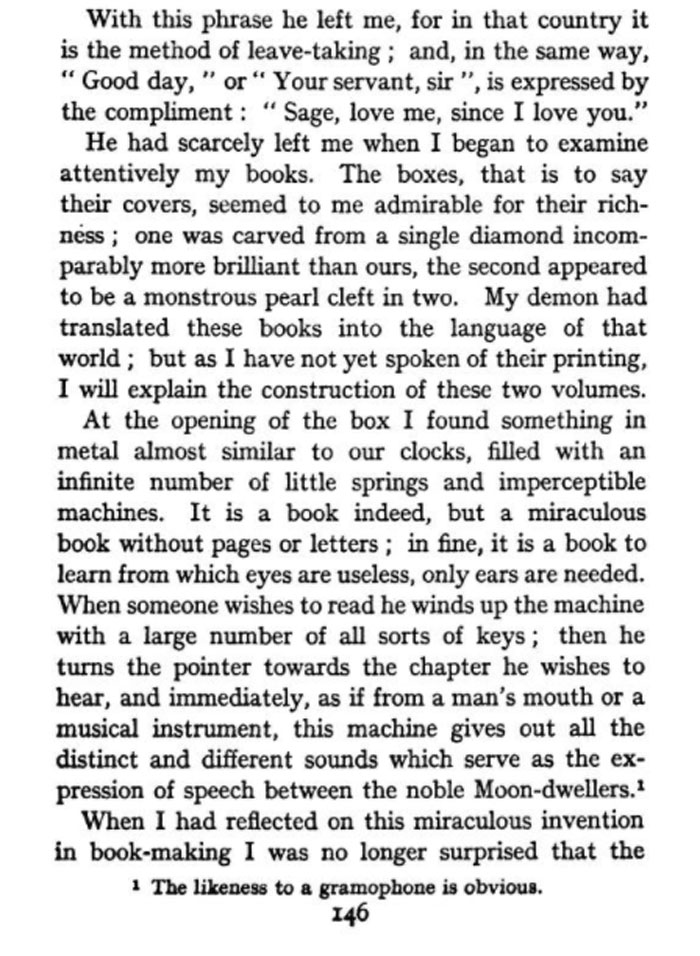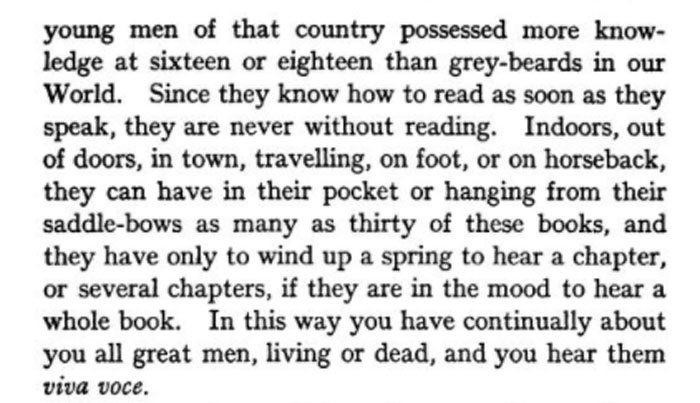|
A Voyage to the Moon by Cyrano de Bergerac, 1899 edition by Doubleday and McClure Co., Courtesy of Internet Archive
From 1899 edition by Doubleday and McClure Co.
Here's how Daniel Marty summarizes Cyrano de Bergerac's literary prediction of the phonograph as invented by Moonmen and described in Bergerac's Voyage to the Moon (published posthumously in 1657). The following comes from page 10 of Daniel Marty's The Illustrated History of Phonographs. (1)
Voyages to the Moon and the Sun by Cyrano de Bergerac, Translated by Richard Aldington George Routledge and Sons Ltd., London The text used for the translation is that printed by M. Lachévre in his Giuvres Libertines de Cyrano de Bergerac, 2 vols., Champion, Paris, 1921. pp. 146-147
|
